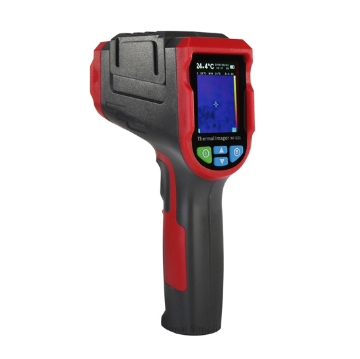Thermal Imaging Cameras
Handheld Digital Thermal Imaging Camera, 120x90 IR Resolution
Night Vision Thermal Imaging Camera for Android
Portable Infrared Thermal Imaging Camera for Home Inspection
Portable Infrared Thermal Imaging Camera, 320x240 IR Resolution
Thermal Imaging Camera for Building Inspection, 256x192 Resolution
Thermal Imaging Camera for Smartphone, 256×192 IR Resolution
WiFi infrared Thermal Imaging Camera, 256x192 IR Resolution
Handheld Thermal Imaging Camera, 260x160 IR Resolution
Fixed Thermal Imaging Camera, 320x240 IR Resolution
What is an Infrared Thermal Imaging Camera?
An infrared thermal imaging camera, often simply referred to as a thermal camera or thermal imager, is a device that detects and captures the infrared radiation emitted by objects and converts it into a visible image, called a thermogram or thermal image. Unlike traditional cameras that capture visible light, thermal imaging cameras operate in the infrared spectrum, allowing them to visualize temperature differences and produce images based on the thermal energy emitted by objects.
These cameras contain specialized sensors called microbolometers, which can detect and measure the heat emitted by objects in the form of infrared radiation. The sensors then convert this thermal radiation into electrical signals, which are processed by the camera's software to generate a thermal image. Each pixel in the image corresponds to a specific temperature, allowing users to visualize temperature variations across a scene.
Infrared thermal imaging cameras are used in various industries and applications, including building inspections, electrical and mechanical diagnostics, firefighting, medical imaging, law enforcement, wildlife monitoring, industrial processes, energy audits, and search and rescue operations. They provide valuable insights into temperature distributions, allowing users to identify hotspots, detect anomalies, troubleshoot problems, and make informed decisions in a wide range of scenarios.
What is a Thermal Imaging Camera Used for?
A thermal imaging camera is a versatile tool used across various industries and applications due to its ability to detect and visualize heat radiation emitted by objects and surfaces. Here are some common uses:
- Building Inspections: Identifying areas of heat loss or water intrusion, detecting insulation deficiencies, and locating HVAC issues.
- Electrical Inspections: Finding overheating components, loose connections, and other electrical faults to prevent equipment failures and fire hazards.
- Mechanical Inspections: Detecting equipment malfunctions, lubrication problems, and frictional heat in machinery to prevent breakdowns and optimize performance.
- Firefighting: Locating hotspots, monitoring fire spread, and identifying hidden fires or victims in smoke-filled environments.
- Law Enforcement: Tracking suspects, locating hidden objects or evidence, and conducting search and rescue operations, especially in low visibility conditions.
- Medical Imaging: Diagnosing medical conditions such as inflammation, infections, or circulatory issues by visualizing temperature variations in the body.
- Wildlife Monitoring: Studying animal behavior, tracking wildlife, and conducting ecological research by observing heat signatures in natural environments.
- Industrial Processes: Monitoring temperature distribution in manufacturing processes, detecting overheating in machinery or components, and ensuring product quality and safety.
- Energy Audits: Assessing energy efficiency in buildings, identifying areas of energy loss, and optimizing heating, ventilation, and air conditioning (HVAC) systems.
- Search and Rescue: Locating missing persons, survivors of natural disasters, or victims trapped in rubble by detecting their body heat signatures.
Overall, thermal imaging camera is a versatile technology with numerous practical applications in various fields, offering valuable insights into temperature variations that are invisible to the naked eye.
How to Choose the Best Thermal Imaging Camera for Your Needs?
Choosing the best thermal imaging camera for your needs involves considering several key factors to ensure you get a device that suits your specific applications and budget. Here are some important considerations to help you make an informed decision:
- Resolution: Higher resolution (e.g., 320x240 pixels) provides clearer images and better detail.
- Temperature Range: Ensure the camera can measure the temperatures relevant to your application.
- Field of View (FOV): A wider FOV (e.g., 56° x 42°) allows quickly scanning larger areas.
- Sensitivity: Higher sensitivity detects smaller temperature differences, improving accuracy.
- Image and Video Capture: Look for cameras that can capture both for comprehensive documentation.
- Storage and Connectivity: Adequate built-in storage (e.g., 8GB) and USB transfer capabilities are important for data management.
- Software: Ensure it includes robust analysis tools for detailed inspection reports.
- Durability and Design: Choose a rugged, ergonomic design for ease of use in various environments.
- Battery Life: Long battery life supports extended use without frequent recharging.
- Additional Features: Options like multiple color palettes and automatic temperature tracking can
enhance usability.
By evaluating these factors and determining which features are most important for your specific applications, you can select the best thermal imaging camera to meet your needs.











